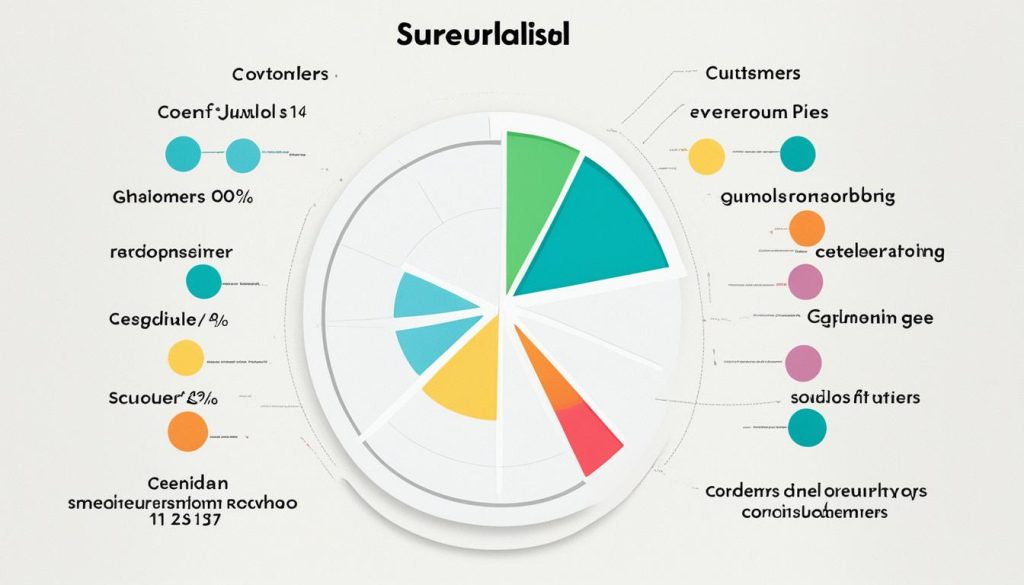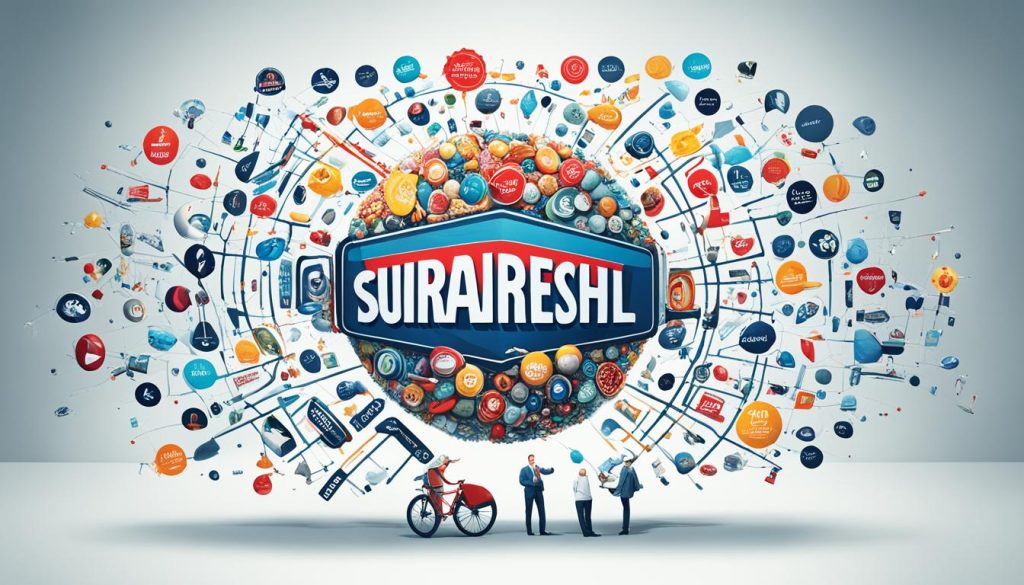The most loved brands worldwide know how to make a deep connection with their audience. They do this by reaching out to specific groups within their broad audience. This adds a personal touch that meets unique customer needs. Achieving such relevance on a large scale comes from a differentiated marketing strategy. This approach helps grow brand loyalty, closeness, and market share by offering products and messages that fit what different customers want while staying true to the brand’s core identity.
Key Takeaways
- Brands leverage differentiated marketing to boost brand equity and market share.
- Differentiated strategies help in building intimate connections with target markets.
- Tailored messaging and product offerings ensure brand relevance and customer satisfaction.
- Addressing unique customer needs strengthens brand positioning in diverse markets.
- Effective differentiation maintains core brand AMC identity while meeting varied market demands.
Understanding Differentiated Marketing

Differentiated marketing is a way for brands to connect with various customer groups. It uses special products and messages for each group, staying true to the brand. This method can broaden the brand’s appeal and increase profits. But, it comes with high costs for research and marketing. It may also weaken the brand’s identity or get mixed reactions from customers.
What Is Differentiated Marketing?
Also known as multi-segment marketing, differentiated marketing tailors campaigns for different segments. It meets the unique needs and likes of each target group. For example, a brand might change its message for teenagers compared to adults, aiming for the greatest effect.
Benefits of Differentiated Marketing
A key benefit is reaching more types of customers, which could boost market share. By meeting the specific needs of each segment, messages become more relevant and engaging. This leads to happier customers and deeper loyalty to the brand.
- Expanded market reach
- Improved customer satisfaction
- Greater brand loyalty
Challenges of Differentiated Marketing
However, there are hurdles. Understanding diverse customer segments demands a lot of research, costing time and money. Also, running several campaigns can raise marketing expenses. And, there’s a chance that too many different messages might blur the brand’s main identity and affect consistency.
- Higher costs for research and development
- Increased marketing expenses
- Risk of diluting brand equity
- Potential for inconsistent customer responses
Market Segmentation: The Foundation of Differentiation

Analyzing the market well and planning segmentation smartly is key for unique marketing. It’s all about understanding your audience deeply. By segmenting the market, businesses can focus on specific consumer groups more effectively.
Importance of Market Segmentation
Market segmentation is crucial. It lets businesses get to know their target audience better. Through detailed market analysis, companies learn about customer demographics like age and interests. This knowledge helps in creating marketing campaigns that truly speak to different audience groups, boosting engagement and sales.
Types of Market Segmentation
There are many ways to segment the market, each with its own advantages:
- Demographic Segmentation: This method categorises people by age, gender, and other basic traits.
- Psychographic Segmentation: This type focuses on lifestyles, personality, and interests.
- Geographic Segmentation: It divides the market by location, like country or city.
- Behavioural Segmentation: Looks at how people behave, including the brands they are loyal to.
Examples of Market Segmentation
Brands like Nike skillfully use segmentation to reach the right people. Nike has special campaigns for track athletes and different ones for football fans. Every campaign is designed carefully to match the unique desires and needs of its target group, making it more effective.
With a specific segmentation strategy, companies can tailor their messages and products to meet the needs of different consumer groups. This careful customization increases customer happiness, strengthens brand loyalty, and encourages growth.
Employing Localisation and Personalisation

Localisation and personalisation make marketing unique for every customer and place. It’s about shaping products and messages to fit local tastes and individual preferences. This might involve using the local language, following cultural customs, and tapping into local trends to better connect with people.
By tailoring content to what we know about customers, brands can build deeper loyalty. Getting to know the nuances of different areas and what makes customers tick is key to this approach.
Personalised customer experiences talk directly to individuals. They might use local sayings or culture to make messages hit home. Even changing products to meet local needs shows customers you really care.
Localised marketing makes sure what a brand offers fits perfectly with what each community expects. When people feel seen and appreciated, they’re more likely to stick with a brand. This blend of local understanding and personal touch drives a brand’s success and builds lasting relationships.
Leveraging Customer Insights for Targeted Marketing

Gathering customer insights is crucial for targeted marketing success. Market research and advanced data help analyse customer behaviour. This makes it easier to understand different customers’ actions, beliefs, and wants.
Gathering Customer不能为空 Insights
Starting targeted marketing requires the right customer insights. Brands gather data from surveys, social media, and buying histories. This data provides a deep look into consumer behaviour, showing their patterns and why they buy.
Utilising Data for Personalisation
Having insights allows for personalised marketing. It customises messages and the entire shopping experience to fit each person. Good customer relationship management keeps brands and customers closely connected. This leads to happier customers and their loyalty.
Using these insights for personalised marketing gives brands an edge. Personalised strategies increase market presence, revenue, and shareholder returns. They make customers feel special and valued.
Differentiated Strategies for Regional Adaptation
Marketing strategies must adapt to each region’s unique needs. This includes creating campaigns that reflect local cultures, habits, and trends. To engage local markets, businesses align their marketing with local events and sensitivities.
Tailoring Campaigns for Regional Markets
Understanding local culture, likes, and behaviour is key for regional campaigns. By focusing on hyper-local campaigns, messages become more relevant to the audience. For example, a fashion brand might showcase styles popular in a specific city to match local fashion.
Examples of Regional Adaptation
Many big brands have mastered regional adaptation. McDonald’s, for instance, offers special items in different countries. In India, the Maharaja Mac caters to non-beef eaters, while Japan enjoys Teriyaki Burgers. These adaptations show how regional insights boost success and connect with customers.
Niche Strategies for Specific Markets
Targeting niche markets means offering something special to specific groups. This strategy involves hyper-local campaigns aimed at particular consumer needs. Eco-friendly products attract those concerned about the environment. Meanwhile, offering gluten-free or vegan options appeals to those with dietary preferences. Such focused campaigns build strong loyalty and customer connections.











